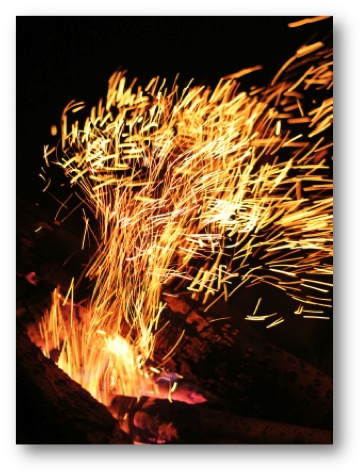This experience may be familiar to you: I attend a meeting and walk in feeling I have a full plate and do not want to take anything more on. As we get deeper into the conversations and explore an area of mutual interest and what can be done, an excitement builds about possible work we can do together. An idea emerges that I get enthused about and before I know it, I find myself volunteering to take on some action items. Even though I am busy, I was motivated to somehow find time to devote to it. This choice to commit came from my intrinsic motivation, not from a boss telling me I have to do this.
This is the spark that we want to light when we work with people and design meetings, initiatives, and work structures. It is particularly important for developing and implementing strategy when you need the input and engagement of people across many functions, skills sets, departments, and/or organizations.
What does it take to create the conditions where people are self-motivated to contribute and collaborate? Here are three core elements:
From Convincing to Co-Creating
In the traditional view of leadership, a leader is one who has a vision and builds buy-in from others to help engage and implement it. In practice, this can feel like trying to convince and cajole people to get on board with our priorities. We focus on “building the case,” messaging, creating mandates and accountability structures, incentives, and audits to monitor behavior – essentially creating a range of external motivators to get other people to behave in ways we want.
 In contrast, the emerging view of leadership is participatory and designed to spark people’s intrinsic motivation to participate. We focus on creating the context and process to enable a group to collectively decide the vision, course of action, and continually learn together and adjust course over time. Instead of one part of the organization convincing another, more integrated solutions are co-created drawing on a diversity of perspectives and expertise. Work is structured to enable fluid collaboration and teamwork where each person works from their strengths to generate a whole greater than the sum of its parts.
In contrast, the emerging view of leadership is participatory and designed to spark people’s intrinsic motivation to participate. We focus on creating the context and process to enable a group to collectively decide the vision, course of action, and continually learn together and adjust course over time. Instead of one part of the organization convincing another, more integrated solutions are co-created drawing on a diversity of perspectives and expertise. Work is structured to enable fluid collaboration and teamwork where each person works from their strengths to generate a whole greater than the sum of its parts.
Start with Questions
The fundamental orientation for this participatory style of leadership is open inquiry. As a leader, our focus is on honing and asking the most powerful questions rather than promoting one answer. Fran Peavey, who created a technique for this called Strategic Questioning, said it well: “It’s a far superior strategy to get all the minds working on what needs to change rather than to convince each person to do what we think is best.”
Strategic questions are open questions that inspire movement, creative thinking, and/or reflective learning. For example: “When we had a major change happen here in the past, what actions and conditions led to that change? How might we create those conditions as we approach this change?”
Convene Conversations
Getting all minds working on what needs to change calls for new ways of convening meetings. Most of the preparation time is to get the question right, invite a diverse mix of people, and create a quality of space where they can really talk. The Art of Hosting is a resource of these types of innovative facilitation techniques that capture the collective intelligence of a group, such as World Café, Open Space, and Proaction Café. The aim is to create the fertile ground for peoples’ perspectives and ideas to connect, combine, seed, and take root.
“Human interaction is the key force in overcoming resistance and speeding change.” – Atul Gawande
Working in this way can stretch us beyond our comfort zone and takes some practice. Instead of being the professional with the answers, we have to learn to sit with questions we do not know the answers to and trust the group and the process. It is not easy to walk into a meeting and have no idea what the outcome will be. We have to build our capacity to be comfortable with uncertainty. Stretching like this is worth it, as I can attest. It is a great feeling when a promising new idea emerges and you can sense the spark of excitement of people in the room to take it forward.
